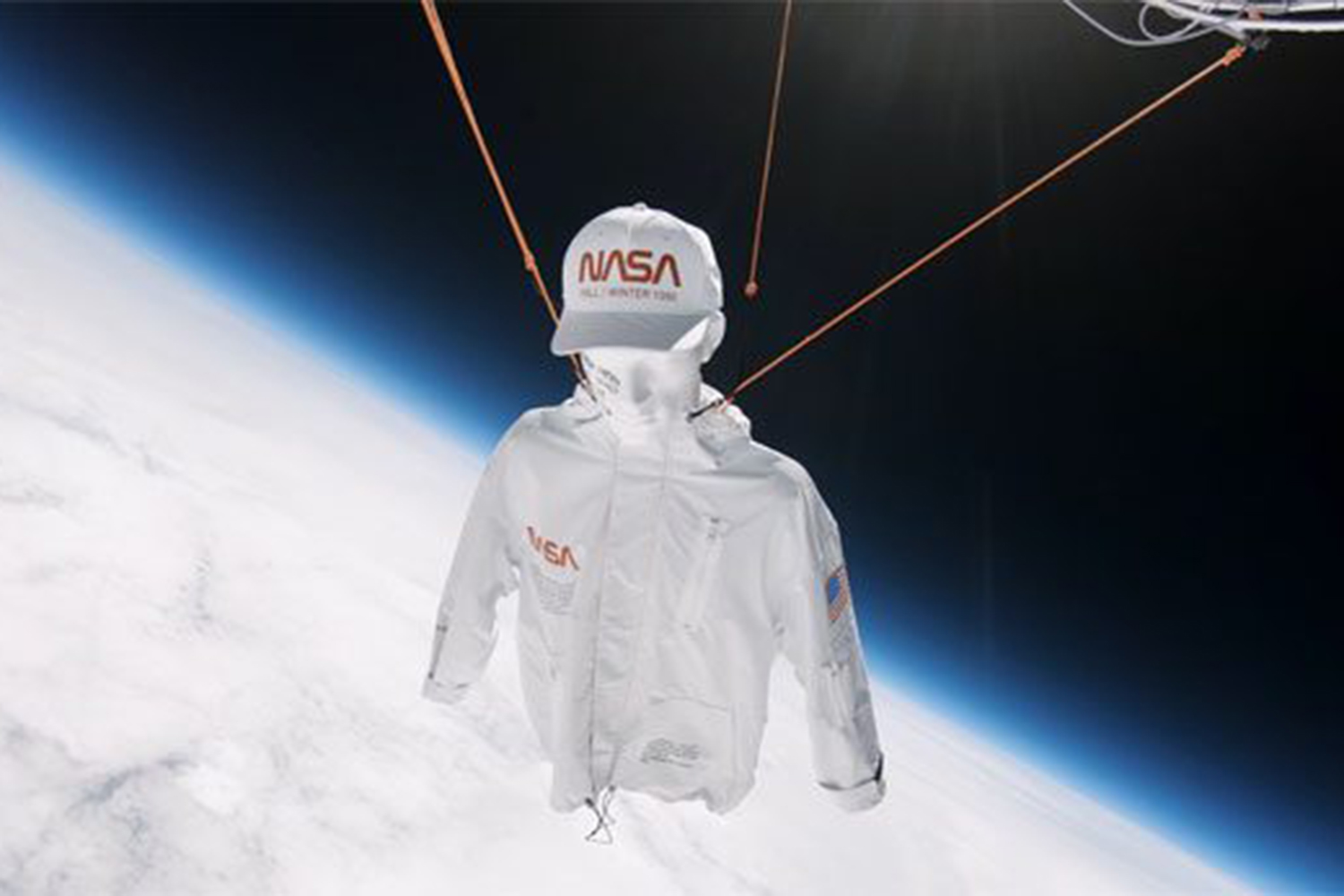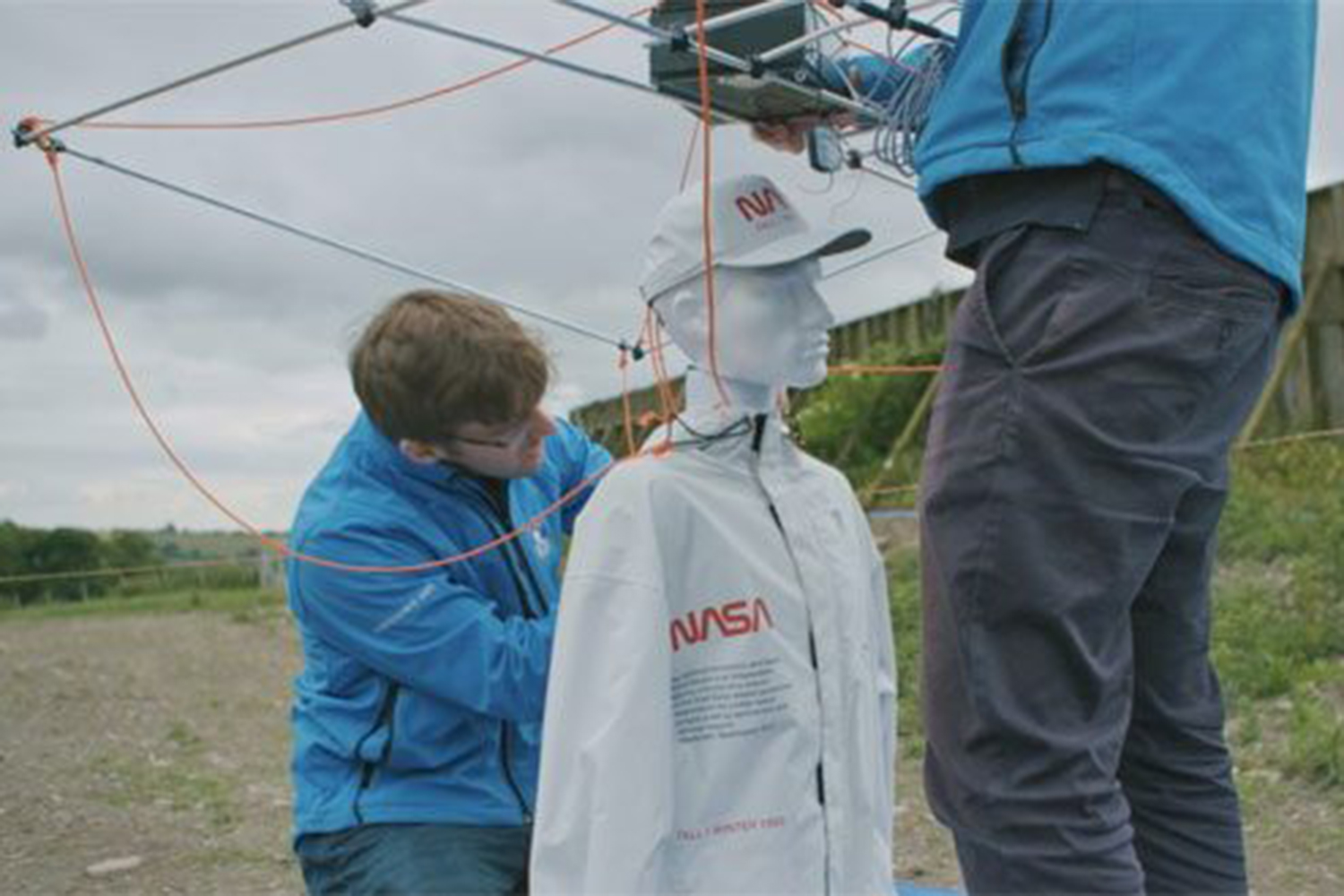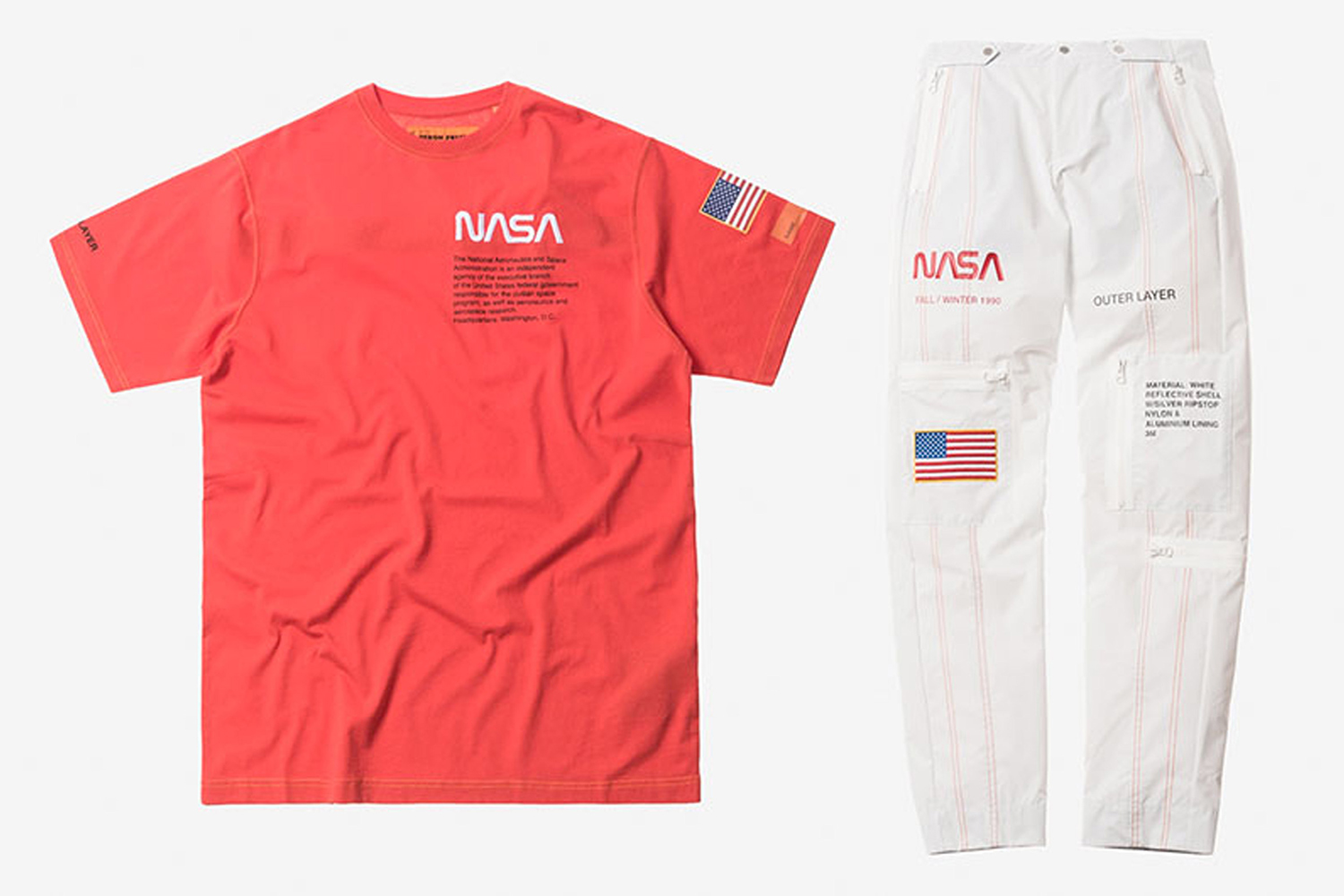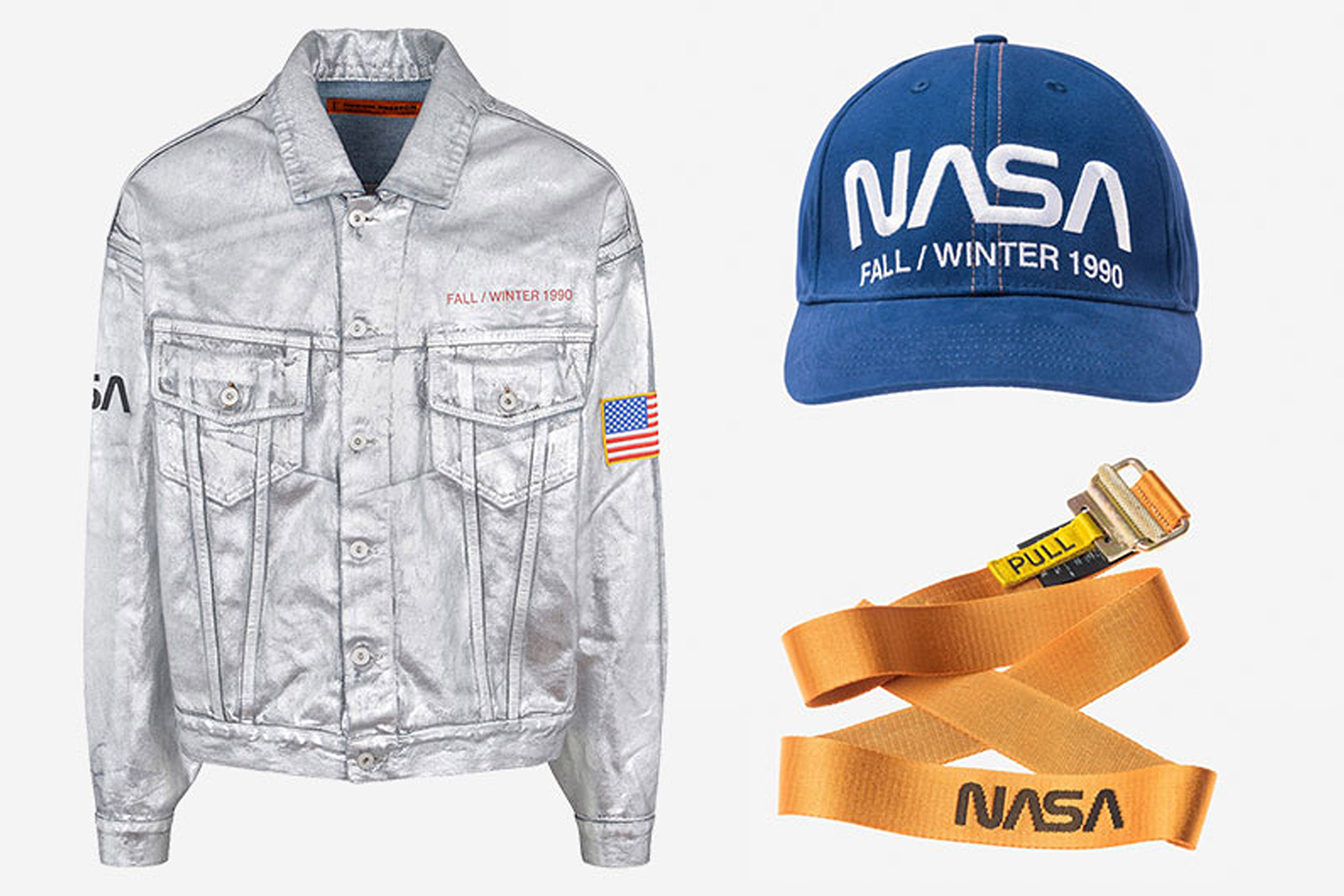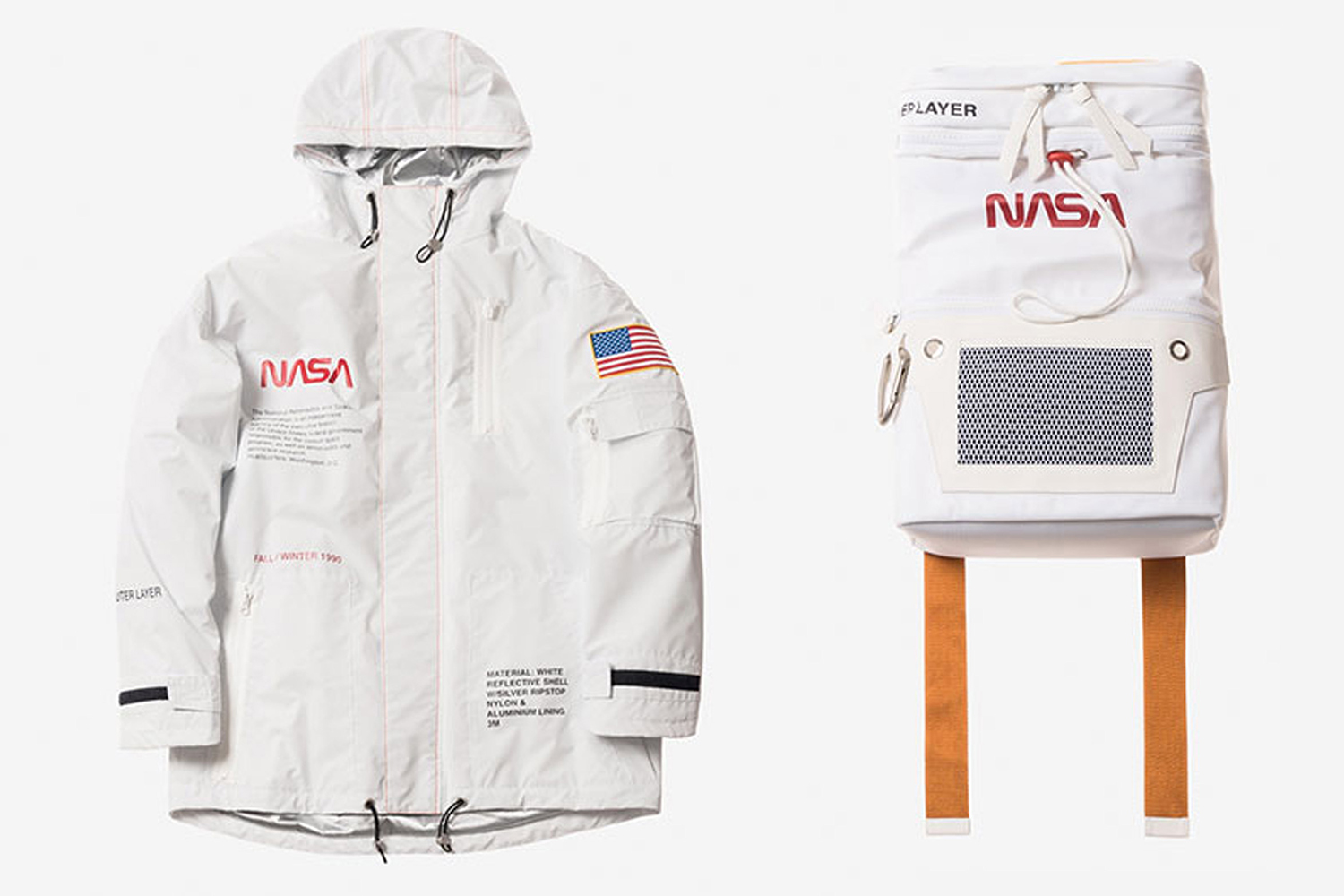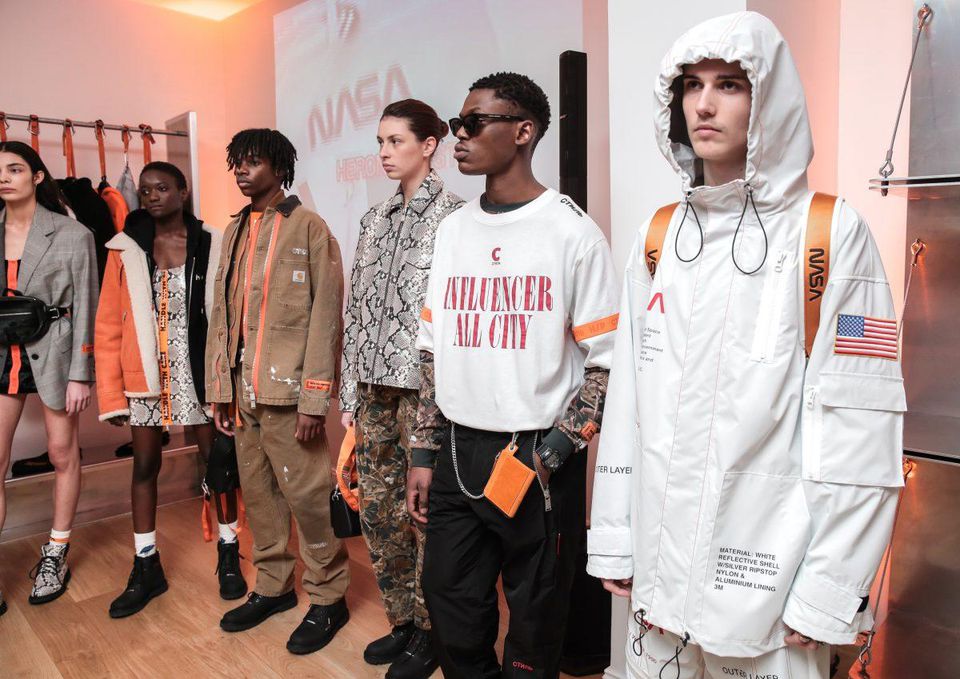Some kids dream of being astronauts. Others dream of styling them.
For streetwear designer Heron Preston, that latter dream has finally come true. Sort of. After contacting NASA five years ago, offering to design their future spacesuits, Preston managed to swing a collaboration with the agency, releasing a new line of outerwear to celebrate 60 years of space exploration, reports Collection Space.
The collection — which can be found on Preston’s website — includes hats, T-shirts, jackets, hoodies, pants, socks, belt, and a backpack modeled off of the Apollo astronaut’s life-support system. To promote the line, Preston launched a streetwear-clad mannequin up to the stratosphere.
“I designed the entire collection based on their spacesuits and so I did a bunch of research,” Preston said in a video accompanying the launch. “These guys are going up to space to push humanity into the future.
“You have to move around a lot, you have to be able to hold tools, and so that is why the bag is designed to be multi-convertible, multi-functional into three parts,” he added. “It is a tote bag, the fanny pack and then it is also a backpack — all in one. And it is designed in the shape of a square, which is just like the backpacks that astronauts wear when they do spacewalks.”
It should come as no surprise that working with NASA entail a few constraints. For one thing, Preston had to follow strict guidelines put in place by the space agency when it reintroduced of the iconic “worm” logo used from 1976 to 1992. Colors were limited to red, gray, white, and black print — and the iconic NASA logo couldn’t sit alongside any other logo or shape.
For Preston, the opportunity to work with NASA was well worth whatever creative restrictions he faced. “I think one of the first exciting moments of working with NASA was just getting a reply that they were open to doing to the project with me,” he said.
The designer even went out of his way to ensure some factual accuracy. ”This is the Fall/Winter 2018 collection,” Preston said, “but it says ‘Fall/Winter 1990’ in respect to the actual time that the logo was actually used. 1990 was one of the last years they could use the ‘N-A-S-A’ logo.”
The collection went on sale at his website and fashion retailers on July 27 (NASA was founded on July 29, 1958.). But, if you’re interested, be prepared for astronomical prices. The parka retails for $1,878, the sweatpants for $422, and the socks for $85.
